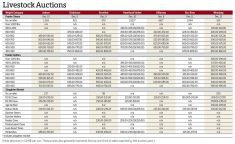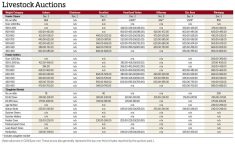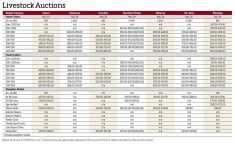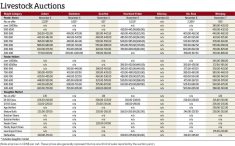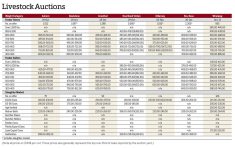In the midst of the fall run, Manitoba’s cattle market stayed strong during the week ended Oct. 24. Every location reported at least 1,100 head sold at regular weekly sales, for a grand total of 15,055.
“It’s the fall run. We’re always busy this time of year,” said Allan Munroe, manager of Killarney Auction Mart. “I don’t know if there were fewer calves being born last spring but there are a few being marketed right now. The prices are drawing them out.”
Last year, during the week ended Oct. 27, only four sites had steers priced at $500 per hundredweight or more. A year later, five sites reported steers surpassing the $600/cwt. mark. In addition, only three sites sold heavyweight steers below $300/cwt.
Read Also
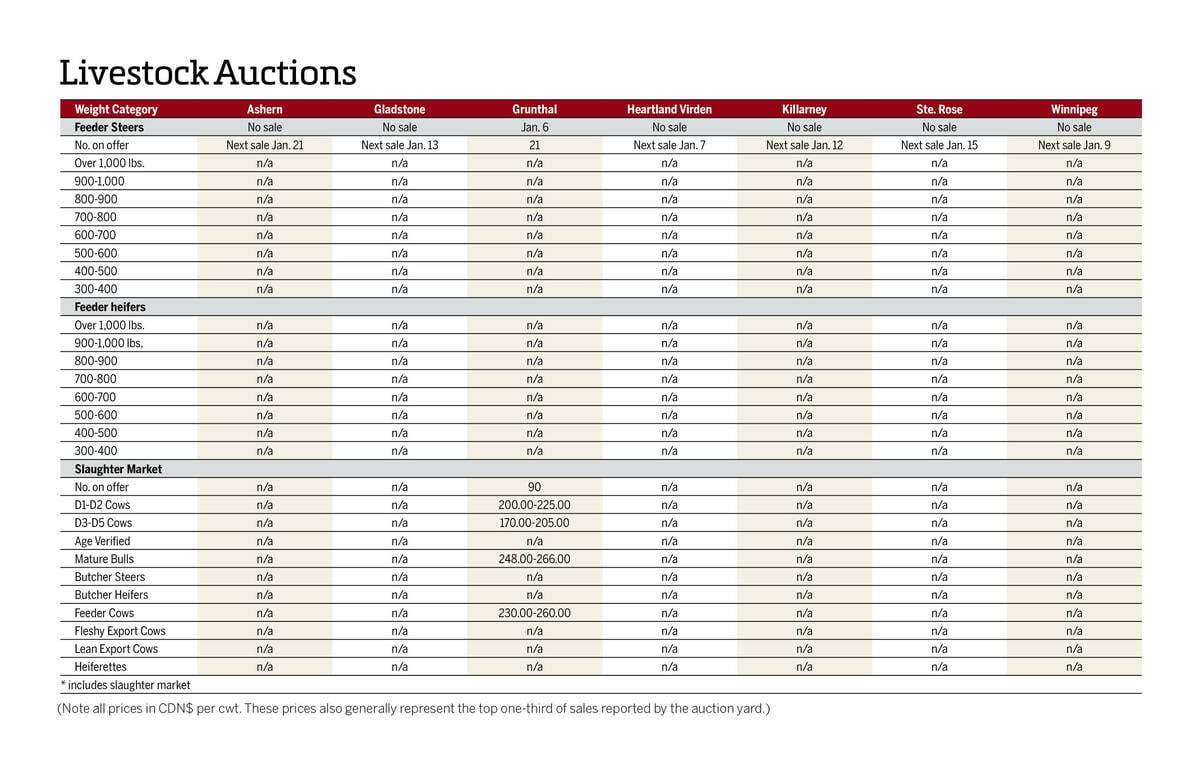
Manitoba cattle prices Jan. 6
Grunthal was the first Manitoba livestock auction mart to kick off 2026 cattle sales in early January.
As for feeder heifers, the $500/cwt. level was exceeded at four sites, compared to none last year. However, slaughter cattle prices are starting to slip.
Munroe attributed higher feeder prices to three factors.
“Cattle numbers overall in North America are at their lowest level in decades,” he said, noting there’s, “lots of forage and cheap grain.”
Demand also appears strong.
“Ontario’s always a big market for Manitoba calves. A lot of the top-end ones will go there. There are some being fed locally either by local feedlots or (custom-fed) by people out of province for delivery in a later date. Alberta and Saskatchewan are traditionally a big market for us,” Munroe said.
While he anticipated logistical issues as more cattle are sold, there will be few complaints price-wise in coming weeks.
“We start seeing the volume we’ve seen this past week and we’re booked solid the next three weeks. We’ll run into the bottlenecks we always see with trucking. Feedlots can only take so many cattle at a time. We will see a little bit of pressure pop in somewhere just as those bottlenecks start to develop,” he said.
“But I think we’re going to have a strong fall this year.”
The U.S. Department of Agriculture released its Oct. 1 cattle-on-feed report on Oct. 25, after press time. Prior to the report’s release, the trade estimated feedlot inventory to be down 0.3 per cent from one year earlier at 11.545 million head, the first year-on-year decline since June. Cattle on feed are expected to decline four per cent from one year ago at 11.14 million, while marketings would be up two per cent at 1.69 million.
At the Chicago Mercantile Exchange, the December contract reached its highest level since July 29 at US$189.325/cwt. on Oct. 24, before closing the day at $189.250. The price represented a gain of $3.075/cwt. compared to Oct. 17. The January feeder cattle contract gained $2.275/cwt. from the previous week at $248.525.





